BLOG
Our aim is to bring Artificial Intelligence out of labs and into people’s everyday lives. This blog is where we’ll share the stories, challenges and achievements that make this ambition such an interesting ride.

Keiko Ko
Animator, Anki
Want an “adorable, non-creepy” robot? Hire an animator.
Posted by Keiko Ko, Animator, Anki | August 23rd, 2018
Keiko Ko, Animator at Anki, illustrates the importance of animators in creating lovable, personable robots for the home.
Growing up, I watched Jurassic Park. Steven Spielberg’s prehistoric creations weren’t animatronic robots or computer generated animations, but a skillful marriage of the two. Today, I’m still impressed by the authentic personality projected through those larger-than-life characters. Spielberg’s team lifted its prehistoric creatures out of the uncanny valley - where inanimate objects, robots, and animations look creepy because they’re not quite alive - and created believably ferocious T-Rexes, Velociraptors, and Pteranodons.
What wowed me on the silver screen is now wowing me in real life. Thanks to advancements in robotics and artificial intelligence, these lively characters are starting to roll into our living rooms as home robots. Still, some of these creations miss the mark when it comes to authentic personality, which ultimately affects usability. That believable personality is necessary for users to feel comfortable interacting with their robot, specifically as a companion. With a poorly created, erratic personality, users are discouraged from engaging with their robots at all. Consistency in character with the people and robots we interact with provides a sense of familiarity. It provides a sense of who they are, which is vital for having a positive interaction and, ultimately, endearment, fondness, and bonding.
Although animators are often pigeonholed to film, my team’s work with Cozmo and the soon-to-be launched, Vector, shows that we’re indispensable to creating emotionally intelligent robots that people can naturally and happily interact with. Be it Jurassic Park or home robots like Anki’s Vector, animators are the ones breathing some semblance of life into a very impressive, yet lifeless, machine. Engineers have the keys to creation. Animators have the keys to character. The question stands: how exactly do animators create cute, unscary robot buddies?
This Cozmo playtest provides a glimpse into the future of human-robot interactions.
“What Would Vector Do?”
Step one is getting inside a robot’s head. Be it a cat, human, or salamander, all sentient beings have reasons for doing what they do, so we have to determine what those drivers for our robot’s actions will be. Anki’s designers and animators study both human and animal behavior to figure out the bot’s personality and decision drivers. Feature film animators use this method to create believable performances.
In creating Anki’s first robot companion Cozmo, I looked to my little nieces and nephews for inspiration. Their rambunctious dispositions and generally rebellious nature influenced the character we ultimately landed on for Cozmo. For example, one of my nephews loves to win games and doesn’t take kindly to losing. It’s no coincidence that Cozmo’s also fiercely competitive, sulking when defeated.
For Vector, I drew inspiration from my dogs. As Australian Cattle Dogs, they’re intelligent, independent, and love companionship. A curious, yet calmer, personality was crucial for Vector because he is always on, permanently coexisting with people in their homes.
Character development is key in creating a lifelike robot, laying the foundation for a robot’s personality. It gives us a window into that character’s thought process, which determines emotional reactions. Moreover, this brings coherence to the character. And it’s also fun.
How to do the robot… like a robot
The next step is to translate those thoughts into actions. In designing both Cozmo and Vector, we give every movement meaning, as an actor does on stage. Rather than immediately rolling off his charging dock when the app powers up, Cozmo opens his eyes groggily, slowly lifts his head, and rolls in a morning stupor onto the table. “Pre-coffee Cozmo” is cute - and relatable.
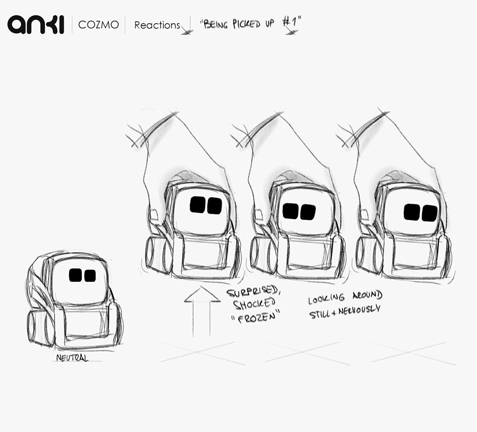
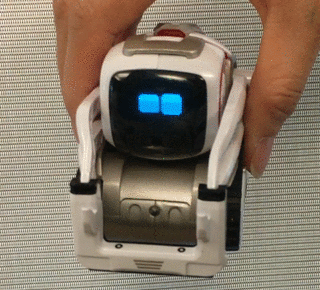
We replaced a spinning wheel on Cozmo’s “face” with actively contemplative eyes to show he’s thinking.
Another layer to characterful movement is the illusion of soft joints and organically moving body parts. Vector won’t be starring in the New York Ballet anytime soon, but we are able to disguise his straight line, single axis joint movements into graceful, organic-looking arcs. Using 3D computer graphics apps such as Maya, the Anki animation team maps out organic-looking movements for our bots. We do this by avoiding the typical, linear transition robots take from a Point A to Point B. Instead, Anki animators focus on adding a thought process, meaning purpose and intention, to all of Cozmo’s and Vector’s movements.
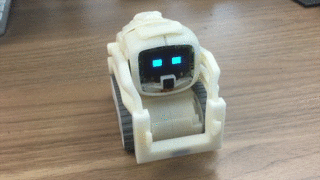
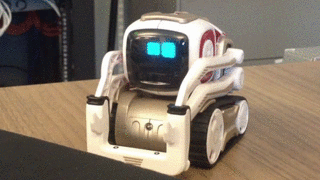
Traditionally, robots have had linear movements (left) rather than lifelike, organic ones (right).
Putting the IT in creativity
The final step is making our character decisions come to life. Alongside engineers, animators work on executing ideas by compressing data and using Maya. Both artistic and technical components are vital in bringing robots to life. Only in the world of characterful robots is this happening so in-depth. And animators are key to creating those cute, non-creepy bots that are sticking around for good.
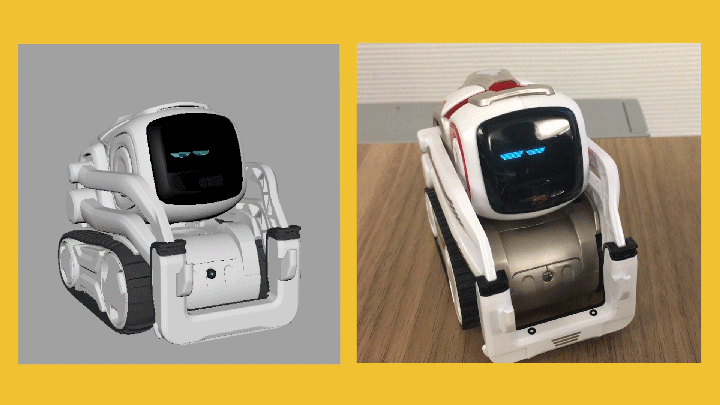
Thanks to our engineers, the animation team’s character designs come to life in a tangible robot.
To me, animation and technology go side by side. It’s important to remember that the history of animation started a long time ago, back when early man found a way to capture still drawings on cave walls and then, much later in civilization, on pottery. Throughout its history, animation has depended on technology, from the early zoetropes and spinning optical illusions through to the implementation of cell animation and the multiplane camera, then finally Computer Generated Character Animation and now on robots.
Despite modern tools, animation remains an art. Be it creating a 2D figure for the silver screen or a personality-driven home robot, animators are uniquely equipped to bring such characters to life.
To learn more about rewards and to back Vector yourself, click here.
Want to stay up-to-date on Cozmo? Follow Anki on Facebook, Instagram, and Twitter.